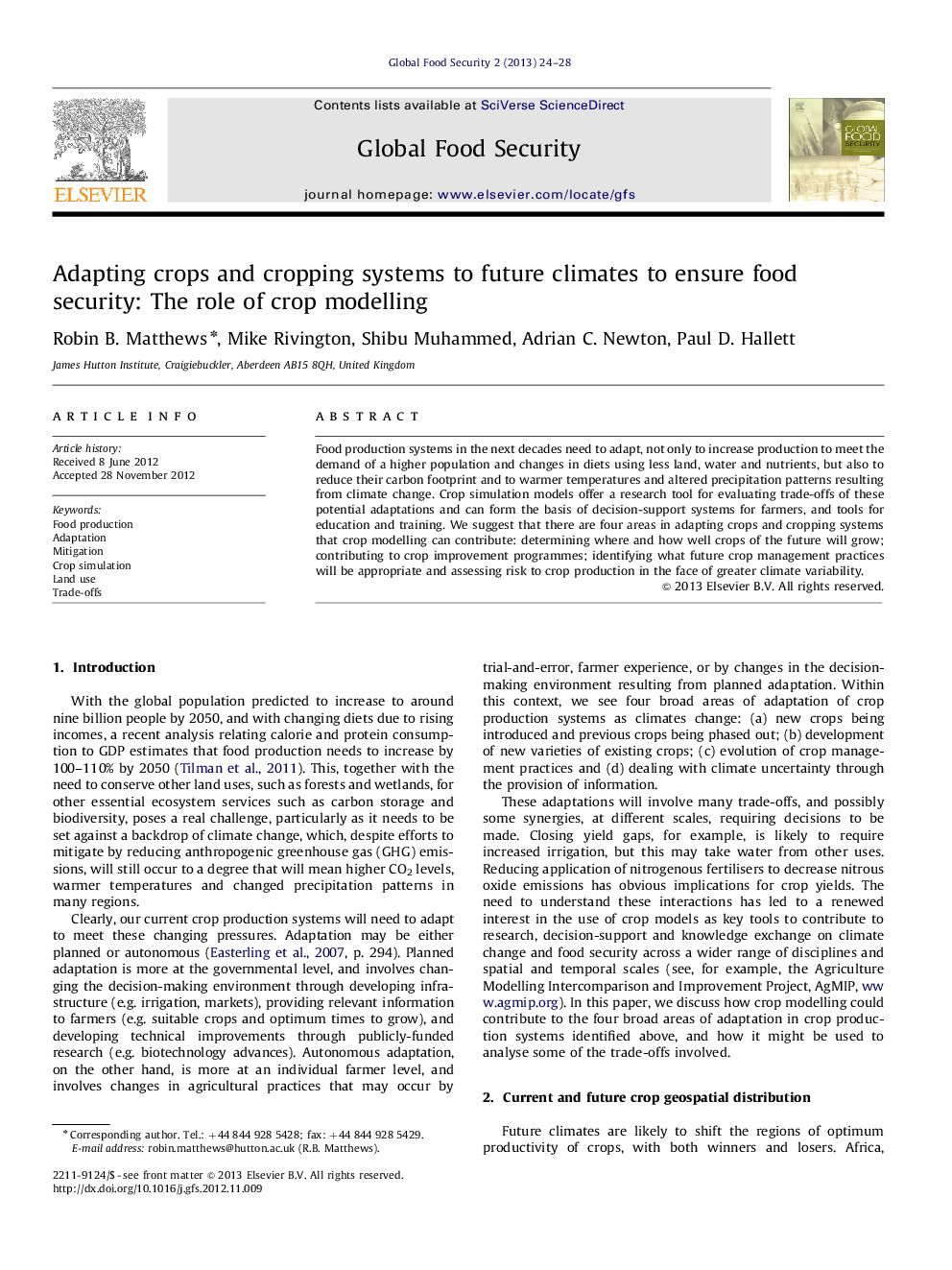| کد مقاله | کد نشریه | سال انتشار | مقاله انگلیسی | نسخه تمام متن |
|---|---|---|---|---|
| 1047576 | 945293 | 2013 | 5 صفحه PDF | دانلود رایگان |
Food production systems in the next decades need to adapt, not only to increase production to meet the demand of a higher population and changes in diets using less land, water and nutrients, but also to reduce their carbon footprint and to warmer temperatures and altered precipitation patterns resulting from climate change. Crop simulation models offer a research tool for evaluating trade-offs of these potential adaptations and can form the basis of decision-support systems for farmers, and tools for education and training. We suggest that there are four areas in adapting crops and cropping systems that crop modelling can contribute: determining where and how well crops of the future will grow; contributing to crop improvement programmes; identifying what future crop management practices will be appropriate and assessing risk to crop production in the face of greater climate variability.
► Crop simulation models are key tools to evaluate tradeoffs involved as cropping systems adapt to climate change and future demands.
► At the plant level, such models can help evaluate the costs and benefits to the plant of significant changes in physiological processes.
► Crop models can help evaluate and optimise alternative crop management practices, such as conservation agriculture.
► Crop models can provide a way of integrating different crop-related knowledge into decision-support systems.
Journal: Global Food Security - Volume 2, Issue 1, March 2013, Pages 24–28
